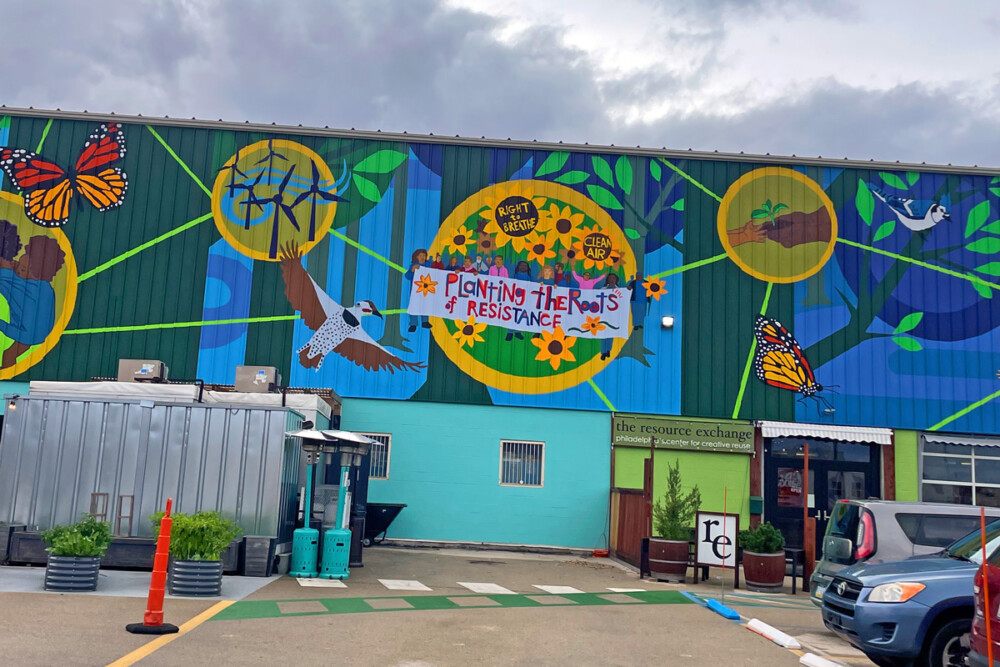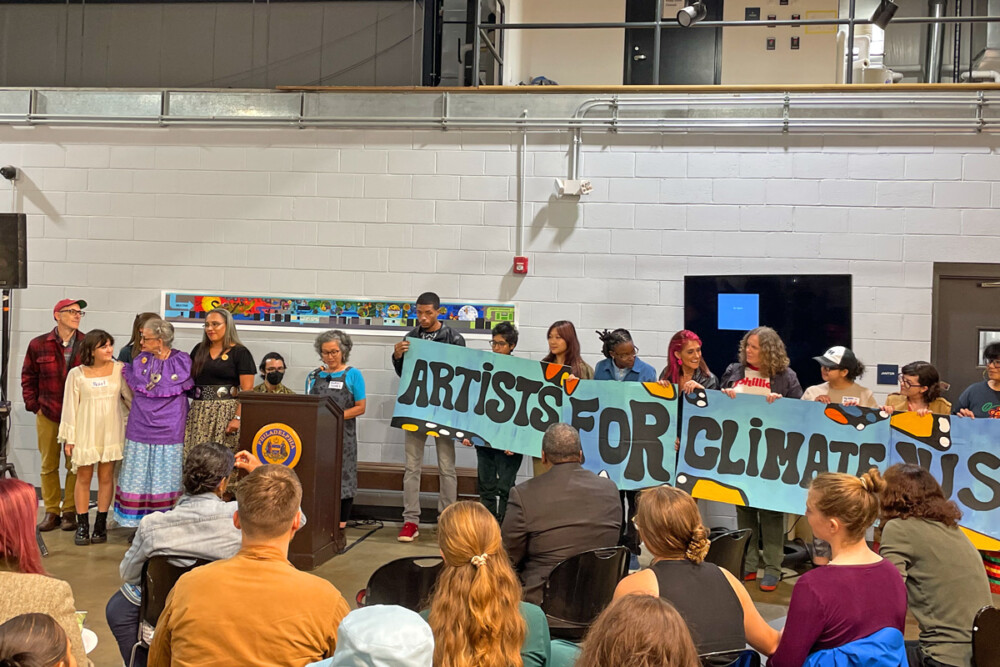
Climate Justice Mural, the first in Philly, brings hope
A new mural on the “Wheelhouse” brings together history, representation and envisioning a resilient future despite the climate crisis.
The plot of land on 1800 N American Street was previously used as a railyard, then an antifreeze and motor oil recycling facility. It was declared a brownfield site.
Although the ground is unsuitable for planting, artists have planted seeds for a hopeful vision for the future.
“The role of the artist is to make revolution undeniable,” said Jerome Shabazz during the mural dedication on October 7th. Behind a new mural in Olde Kensington is a story of collaboration and empowerment.
The Climate Justice Mural is 400 feet long and illustrates the injustices of the past, present and a hopeful vision for the future. The mural is the first one of the Mural Arts Climate Justice Initiative (CJI), which creates public art about climate change in Lenapehoking (the homelands of the Lenape people, approximately equivalent to the watershed of the Lenapei Sipu / Delaware River).

Although the mural has been physically in progress with cloth installation since April, the idea to gather activists around the region and have conservation transpired before COVID. There were artist circles, virtual Zoom meetings, and collaboration to provide input, themes and details for the mural. Groups include Philly Thrive, Chester Residents Concerned for Quality Living (CRCQL, pronounced “circle”), Neighbors Against the Gas Plants, Iglesias Gardens, and indigenous people in the Philadelphia region.
The result? The mural tells an elaborate story, beginning with Turtle Island, or the native creation story of Mother Earth. As the mural evolves with imagery of ships symbolizing colonization, images of man’s destruction include pollution, logging, and pipelines, along with oil refineries and fracking. Environmental justice imagery of redlining and gentrification evolves into climate protests until eventually envisioning a hopeful, restored future. Other imagery like the Monarch butterfly, symbolizes how nature sees no borders, a construct of mankind.
Watch the entire explanation of the mural here:
Lead artist Euhri Jones has been making art for over 25 years and centers her work around sustainability issues. However, it was the first time she painted a project and dealt with the unusual consequences of the climate crisis.
For example, like when Jones had to check the air quality to see if it was safe to paint outside due to this summer’s wildfire smoke. Or, dealing with the heat: “We’re out here in a hundred degrees painting this thing with no shade,” said Jones.
Challenges overcome through collaboration

There are no state or federal tribes recognized in Pennsylvania, which means there’s no government alliance in the commonwealth, like an ‘Office of Indian Affairs’ that may exist on the federal level or in other states.
Although the project had a long list of collaborators, there were lessons along the way while involving indigenous people during the project. “Mural Arts wanted to do this thing involving indigenous and, Lenape communities, but didn’t really know how. So we were figuring out how to do it as we were in the process,” said Jonathan Sidharta-Leibovic, Community Liason for the project.
Along those lessons? Take time to meet and get to know the indigenous leaders. There also may be different protocols in specific tribes, like who to approach or who can be approached.
Another tip? “Don’t tokenize people,” said Sidharta-Leibovic. Anyone who shares their story may say they represent the community, but they ultimately speak for themselves, so it’s best to talk to several people for a collective perspective.
Although it may take work, it’s worthwhile. Pursuing our own passions and finding connections with other people are not only important to building a life in art, but for another shared crisis, as Jones shared during the mural dedication.
“We are most effective, addressing the climate emergency through the conduit of what we are already passionate about. And, our future depends on building those connections with each other,” said Jones.
This mural is a result of both efforts.









